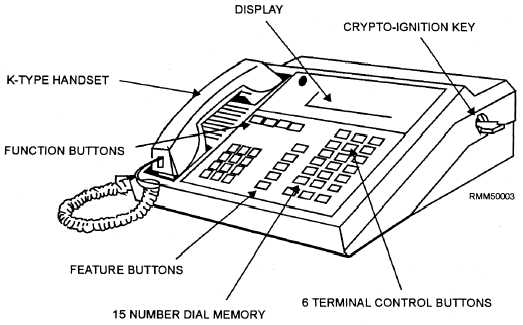To use the SSIXS, the submarine must be in a line-
of-sight position with a satellite. The submarine must
also be in a tactical situation that permits exposure of its
mast-mounted antenna.
The SSIXS provides access to a satellite path
through a programmable mixture of query-response and
broadcast-without-query functions. This type of access
provides maximum operational flexibility to the
submarine commander.
All transmissions on the SSIXS provide automatic,
reliable, long-range, high-data-rate, and
cryptographically secure UHF communications
between submarines, and between submarines and
shore stations.
AUTOMATED VOICE
COMMUNICATIONS SYSTEMS
The telephone is and will continue to be a
convenient and fast way to communicate. In this
section, we will discuss the Secure Telephone Unit
Third Generation and the Defense Switched Network
(DSN), which is an updated version of the Automatic
Voice Network (AUTOVON).
SECURE TELEPHONE UNIT THIRD
GENERATION
The Secure Telephone Unit Third Generation
(STU-III) is the newest communications system that
meets the need for protecting vital and sensitive
information over a telephone system. The STU-III is a
compact, self-contained desktop unit capable of
providing the user with clear and secure voice and data
transmissions. The unit is fully TEMPEST protected
and is certified by the National Security Agency for use
up to and including Top Secret material.
The STU-III is unique in that it works as an ordinary
telephone and as a secure telephone network to other
STU-III terminals. For secure transmissions, the STU-
III uses a unique keying system.
The three manufacturers of the STU-III terminals
for the Navy are AT&T, Motorola, and General Electric.
Figure 1-3 shows an AT&T STU-III terminal.
The STU-III is operated the same as any telephone.
That is, you pick up the handset, wait for a dial tone,
then dial the number of the person you want to call. All
calls on the STU-III are always initiated in the clear
voice mode. Once the party you have called has
answered, you have the option of talking to that person
in the clear voice mode, clear data mode, secure voice
mode, or the secure data mode.
Terminal Setup
The STU-III terminal uses special keys with a
designator of KSD-64A. The KSD-64A is a plastic
device that resembles an ordinary key. Two types of
keys are used with the STU-III, the seed key and the
crypto-ignition key (CIK). The seed key is a special
keying material used for the initial electronic setup of
the terminal. The CIK key is used by the users to
activate the secure mode.
Figure 1-3.—AT&T STU-III terminal.
1-17



